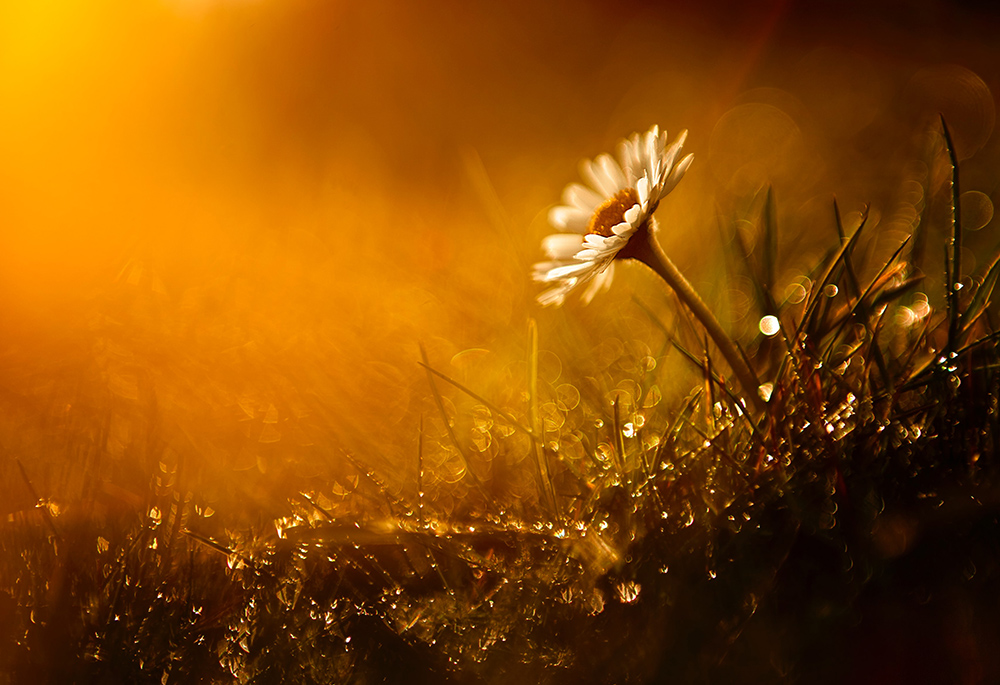
(Unsplash/Basil Smith)
I was privileged to attend Catholic schools for all of my formal education, up to and including graduate school. Franciscans were staffers in each school I attended, so Franciscan being my choice of community should not come as a surprise. In ministry, even before joining my community, I was always in institutions staffed by various religious communities: Dominican, Salvatorian, Franciscan, Mercy, Notre Dame, Pallottine, and single representatives from a few other congregations.
"Back in the day," religious vocations in the United States usually came right out of grade or high schools staffed by vowed religious women and men. That's not been the reality in my lifetime so I realize my experience of being with vowed religious pretty much my entire life is somewhat unique. I never really gave it much thought, until now.
I'm currently ministering in a school where my community has served since the school's founding nearly 100 years ago. As was the custom in previous times, the top floor of the school was the convent, where at any given time, up to 50 sisters who ministered in the school lived. The convent was converted into school space some 35 years ago when the last group of sisters moved out. When I started ministering at the school there were a dozen members of my community and a few other religious order sisters, brothers and priests. We didn't live together or associate with each other on a regular basis, as the campus is huge and paths didn't always cross. We did, however, know each other were there.
Times change, people move on or retire (and in some cases die while still engaged in ministry), and the group has gotten smaller. When August came around and another school year started, I was suddenly "the only one" left. The other sister hadn't planned on leaving, but changing health made her departure necessary (she is being well-cared for). I knew that would happen someday, but not consciously, and I wasn't ready for it to happen when it did or as unexpectedly as it did.
The changing face of religious communities in the United States is being well and publicly documented. Some communities are merging, some have chosen to come to completion, some are continuing and being attentive to "what comes next," some are growing, and — not to sound judgmental — but I'm sure there are some who aren't paying attention. Regardless of the situation of any given religious community, the fact remains as a group in the United States we are not serving in institutions as we once were.
Advertisement
Let's back up a bit. The school where I minister was founded by an order of priests and brothers, and while they did have some staff in the school, it was really sisters who got the place up and running. There have been a couple dozen sisters from other religious communities over the years, but it was the School Sisters of St. Francis, or SSSF, who have had a large and continuous presence in the school. When I arrived at the school, I was the 236th one of my sisters; all total we've given almost 1,800 years of ministry to the school.
I can tell you, it's been an adjustment to now be "the only one."
In the midst of all that comes with suddenly being "the" vowed religious on staff, I'm making conscious decisions to keep "the sisters" present. I'm feeling a great responsibility to represent who the School Sisters of St. Francis are, and have been, for the school. That means, for example, putting context and community stories around feast days. It means inviting the staff and students who know (or knew) some of my sisters to share their personal stories and learnings with me and each other.
An anecdotal survey of the new students, and even some staff, shows the vast majority have never met a sister, and even some who have "no clue" what it means. At best they have the somewhat warped media portrayals of religious sisters.
So St. Francis Day wasn't bird baths and animal blessings — rather it was a story of his radical embrace of the leper. I asked students and staff to consider: Who are the modern lepers, what would it take for us to embrace "those people," and what could be learned? The list of those who exist on the margin of society in 2022 was long and varied, and made for great discussion.
When the SSSF foundation day comes around, I will share stories of three 20-somethings leaving behind everything they had and knew, sailing to the United States and putting down roots without much of a plan. And I will ask what would it take for each of us to do something similar. I was a 20-something when I joined my community. Religious, as living organizations, continue to change and grow, but I joined — I didn't create from scratch. And knowing myself as I do, I am almost 100% certain I couldn't have done what Alexia, Alfons and Clara did.
When my community was founded, our focus was on responding to the needs of the times. Early stories tell of us doing what needed to be done. Those stories did not focus on "how many" sisters were at any given mission.
While sharing, or expanding, the knowledge of who my community is, I hope to help people recognize and understand our connection to the school. And hopefully I can stay focused on carrying on a long and inspired tradition instead of getting caught up in "I'm the only one."






